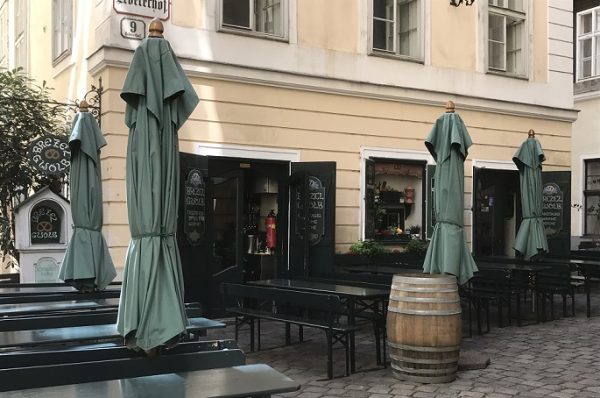Brezl Gwölb
The “Ledererhof” building was first mentioned in 1341 and was created from several houses. What you can’t see from the outside is the fact that the building is lower at the bottom than the height in the visible area.

The first basement, which is now part of the restaurant, was at ground level in Roman times. A Roman wall with a window opening can still be seen here today. The three other cellars were originally connected to many other old cellars in the 1st district. This meant you could travel underground, for example from the Hofburg to the old town hall in Wipplinger. After the wars of the 20th century, these connections were filled and closed.
Sie sehen gerade einen Platzhalterinhalt von Standard. Um auf den eigentlichen Inhalt zuzugreifen, klicken Sie auf den Button unten. Bitte beachten Sie, dass dabei Daten an Drittanbieter weitergegeben werden.
Mehr InformationenThere was originally a bakery in the premises of today’s “Brezl-Gwickel” restaurant, one of the first bakeries in the city. The “Laugenbreze” was made in this bakery. As a naming in connection with the word “Gwickel”, an old Viennese name (Nestroy) for a restaurant, the current name “Brezl Gwickel” was created.
The restaurant is open continuously from Monday to Sunday or lunchtime to evening.
Address: Ledererhof 9, 1010 Vienna
Public accessibility: U3 subway line at Herrengasse stop or reachable on foot in a few minutes from Stephansplatz or Schottenstift.
Karte:
Sie sehen gerade einen Platzhalterinhalt von Standard. Um auf den eigentlichen Inhalt zuzugreifen, klicken Sie auf den Button unten. Bitte beachten Sie, dass dabei Daten an Drittanbieter weitergegeben werden.
Mehr InformationenMore information about the Brezlgwölb


